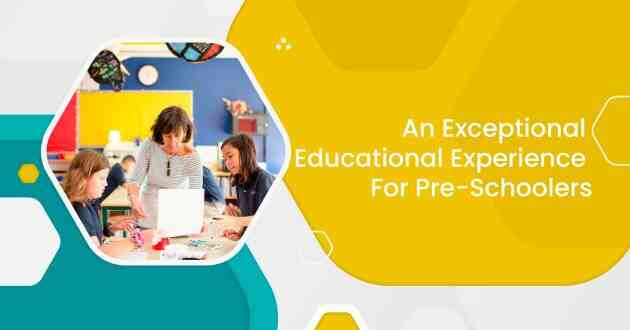The Evolution Of Learning Centers: Adapting Education For The Modern World
- - Category: International Studies
- - 08 Apr, 2024
- - Views: 2
- Save
Learning centres have undergone significant transformations over the years to meet the evolving needs of learners.
Learning centres have undergone significant transformations over the years to meet the evolving needs of learners in the modern world. From traditional libraries to dynamic hubs of knowledge and innovation, these centres play a crucial role in facilitating education and skill development. This article explores the evolution of learning centres, highlighting their adaptation to contemporary educational paradigms and the challenges and opportunities they face.
The Traditional Learning Center
Historically, learning centres were synonymous with libraries, serving as repositories of knowledge where individuals could access books, journals, and other resources. These spaces primarily focused on providing information and supporting academic research. However, as technology advanced and learning became more interactive and multidimensional, the role of learning centres began to evolve.
Transition to Multimedia Hubs
With the advent of digital technologies, learning centres expanded their offerings to include multimedia resources such as online databases, e-books, and interactive learning platforms. This transition marked a shift towards a more dynamic and accessible learning environment, catering to diverse learning styles and preferences. Multimedia hubs within learning centres became spaces where learners could engage with content in innovative ways, fostering creativity and critical thinking.
Embracing Collaborative Learning
In response to the growing emphasis on collaboration and teamwork in education, learning centres began to prioritise collaborative learning spaces. These areas were designed to encourage student interaction, fostering peer-to-peer learning and knowledge sharing. Group study rooms, project spaces, and collaborative technology tools became integral components of modern learning centres, promoting active engagement and collaboration among learners.
Integration of Technology
Technology has revolutionised the way learning centres operate, enabling them to offer a wide range of digital resources and services. From online research databases to virtual reality simulations, technology has transformed the learning experience, making it more immersive, interactive, and personalized. Learning centres have embraced emerging technologies to enhance access to educational resources, support distance learning initiatives, and adapt to changing learning preferences.
Focus on Lifelong Learning
In today's rapidly evolving job market, lifelong learning has become essential for career advancement and personal growth. Learning centres have responded to this trend by expanding their programming to include lifelong learning opportunities for learners of all ages. From professional development workshops to continuing education courses, these centres offer a diverse array of learning experiences designed to meet the needs of lifelong learners. By fostering a culture of continuous learning, they empower individuals to adapt to change and thrive in a knowledge-driven society.
Addressing Equity and Inclusion
As advocates for equal access to education, learning centres strive to create inclusive environments where all learners feel welcome and supported. This includes addressing barriers to access such as physical disabilities, language barriers, and socioeconomic disparities. Learning centres are increasingly incorporating universal design principles and accessibility features into their spaces and services to ensure that everyone can participate fully in the learning experience. Additionally, they are actively working to diversify their collections and programming to reflect the needs and interests of diverse communities.
Challenges and Opportunities
Despite their evolution and adaptability, learning centres, including early learning centres, face several challenges in the modern educational landscape. Funding constraints often limit the resources available for staffing, programming, and facility maintenance, making it difficult for centres to provide high-quality services to their communities. Technological limitations, such as outdated infrastructure or insufficient access to digital resources, can hinder centres' ability to meet the diverse learning needs of their users. Additionally, shifting educational priorities and policies may require centres to continuously reassess their programs and services to remain relevant and effective.
Furthermore, the rise of online learning platforms and digital libraries has transformed the way people access educational resources, leading some to question the relevance of physical learning centres. With the convenience and accessibility of online resources, individuals may opt for virtual learning experiences over visiting a physical centre. This trend poses a significant challenge for learning centres, as they must find ways to demonstrate their value and distinguish themselves in an increasingly digital educational landscape.
Additionally, learning centres can explore new partnerships and collaborations with other educational institutions, community organizations, and technology companies to expand their reach and impact. By forging strategic alliances, centres can tap into additional resources, expertise, and funding opportunities to support their mission.
Moreover, learning centres can differentiate themselves by emphasizing the unique benefits they offer compared to online learning platforms. For example, physical centres provide opportunities for face-to-face interaction, collaboration, and hands-on learning experiences that may be lacking in virtual environments. By highlighting these strengths and creating engaging, immersive learning environments, centres can attract and retain users who value the social and experiential aspects of in-person education.
Ultimately, by embracing change and staying attuned to the needs of learners, learning centres, including early learning centres, can overcome challenges and continue to serve as vital hubs of education and innovation in the modern world. Through strategic adaptation, innovation, and a commitment to excellence, these centres can fulfil their mission of empowering individuals of all ages to thrive in a rapidly changing society.
Conclusion
The evolution of learning centres, including early learning centre, reflects the changing nature of education and the increasing demand for accessible, interactive, and lifelong learning opportunities. From traditional libraries to multimedia hubs and collaborative learning spaces, these centres have adapted to meet the evolving needs of learners in the modern world. By embracing technology, fostering collaboration, and promoting equity and inclusion, early learning centre play a critical role in shaping the future of education and empowering individuals to thrive in a rapidly changing society. Early learning centre serve as foundational spaces where young learners embark on their educational journey, laying the groundwork for future academic success. Through interactive play, engaging activities, and supportive environments, these centres foster curiosity, creativity, and social-emotional development in young children. By providing access to high-quality early childhood education and care, early learning centre contribute to closing the achievement gap and promoting educational equity from an early age. As society recognizes the importance of early childhood education in shaping lifelong learning outcomes, early learning centres are poised to play an increasingly vital role in preparing the next generation for success in school and beyond.



